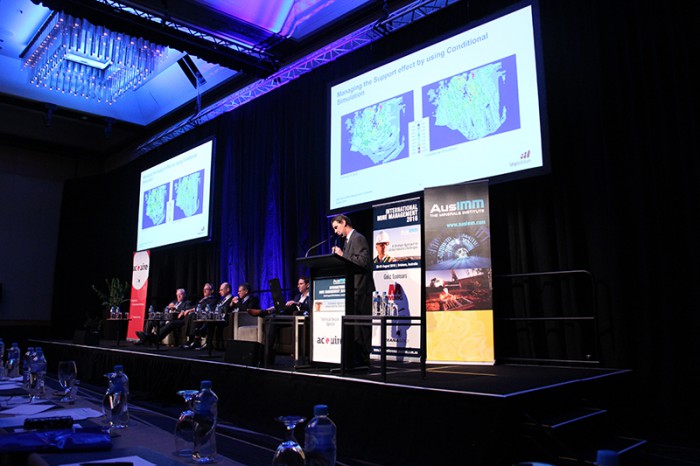How GIM can lead to process improvement and innovation
I recently attended the International Mine Management conference in Brisbane and was lucky to have the opportunity to chair a technical session on the second day. Several key themes emerged at the conference over the three days and, either directly or indirectly, all dealt with ways to improve performance to increase profitability. Different speakers approached the topic from different angles, including:
- Fostering a culture that leads to innovation
- Raising the importance of data in the decision-making process
- Organising the business to fully leverage investments
- Discovering ways of increasing probability and the speed of new discoveries
- Developing ways to minimise operational disruption and risk
One of the most interesting presentations was delivered by Nick Holland, CEO of Goldfields. In his keynote speech titled, ‘Can Gold Mining Avoid the Sins of the Past?’, he spoke about the need for the industry to turn the masses of available data into knowledge. Why? Because once we have improved insight from this data, we are able make more informed and accurate decisions across the business.
Holland presented how a focus on improvements in processes and new innovations can directly impact cash flow and if it didn’t, then it was probably not worth doing. Better utilisation of data is a big part of that; leveraging data assets can be a first step towards greater profitability.
How poor data can stifle business innovation
There’s no doubt mining businesses want to innovate, but data hurdles often stifle business initiatives. Data becomes an impediment to better processes and innovation when it cannot be consolidated, organised and, therefore, useful and trusted. Another common example is when a business has inconsistencies across the business or when different sites use different systems. If your teams can’t get to the data they need, or your systems don’t talk to each other, it reduces your ability to make key improvements like lowering drilling costs. In addition, your most valuable and highly skilled people end up pushing paper, leading to extremely poor turnaround times. Innovation is hindered by the very people best placed to make advances because they’re spending copious amounts of time maintaining data instead of doing the job they’re hired for.
Improved process leads to innovation
Anglo American discovered multiple efficiency gains when they implemented the GIM Solution across seven of their mining sites. Once they had alleviated inconsistencies in their processes and systems, the whole business experienced benefits they hadn’t predicted. Not only were they able to deliver data to the business faster, their approvals and processing of expenditures became more efficient. Time tracking and allocation became more effective.
Trust in your data is critical to innovation. Once issues of trust are resolved and you have a single source of truth for your geoscientific data, a different view towards your data emerges.
- Data is validated and verified one time, at the point of capture. This greatly reduces or eliminates the amount of time mining professionals spend massaging data and puts them back into their real professions of geology, engineering or drilling, to name a few.
- The data is secure. Once your data is stored in a scalable tool, the chances of it being corrupted or deleted are minimal. You can rely on your original observations and measurements from exploration, during operations and through the life of the mine.
- Once you have verified, secure data, you can re-use it without having to redrill or resample. The same data is available to any and all stakeholders. Reports can be generated with minimal effort for your executive team and other departments like marketing, finance and business development.
It’s no surprise when innovation blockers are lifted, new capabilities and processes emerge. Technology is making it possible to look at datasets together to reveal information that was never possible to look at before. Business makes new discoveries with old data due to innovations and improvements in data management. In the case of Anglo American, they were able to capture a variety of exploration costs in the GIM Suite which has allowed for more accurate borehole cost analysis.
Innovation and the GIM Solution
By the end of the conference, I was very encouraged about the mining industry’s focus on implementing processes around their data. For 20 years, acQuire has been developing Geoscientific Information Management (GIM) solutions to allow natural resources companies to create a single source of truth for their mining data. This is an ideal way to drive improvements and generate better cash flow as Nick Holland spoke about in his keynote address. When you foster innovation in your business, improved profitability follows.
If you’d like more information about how your geoscientific data can foster innovation and profitability in your organisation, please get in touch. The conference was full of great ideas and examples; I’d love to share them with you.



